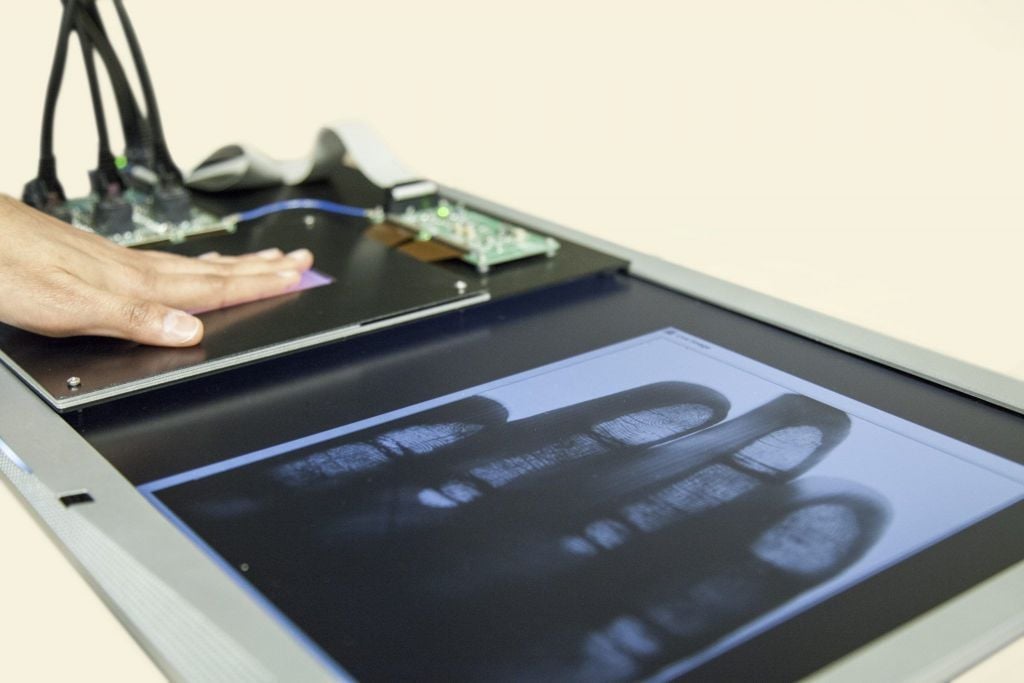
Imec researchers based at Eindhoven’s Holst Centre have developed a brand new type of flexible, large-area sensor technology which can be used for detecting finger and palmprints. Less than 0.2 mm thick, the new sensors can be embedded into objects such as mobile phones and door handles to create “invisible” yet secure access-control systems that are able to tell if the print is from a living person, rather than a counterfeit.
According to imec, the new sensors’ ability to read various wavelengths of light, including near infrared (NIR), mean they could allow for the identification of vein patterns in a person’s hand – believed to be even more specific to individuals than a fingerprint.
Beyond this though, because the sensors are able to detect light that penetrates someway into the skin before being reflected back out, they are able to sense tiny changes in the capillaries of the hand caused by a heartbeat – so verifying that the print comes from a live person.
Imec believes this new super slimline sensor technology is well suited for security and law enforcement applications, but the NIR sensing technology itself could also be used a variety of other applications, including blood oxygenation monitoring, or for night vision and 3D facial recognition.
“The flexible fingerprint sensor shows the versatility and maturity of the flexible electronics technologies that Holst Centre is developing”, says Hylke Akkerman, imec project manager at the Holst Centre. “With the underlying technology already in use in the flat panel industry, there is a fast route to manufacturing and we are looking for industrial partners to take that step.”
The technology is due to be demonstrated at the Society for Information Display (SID) Display Week in Los Angeles later this month, as well as the 2018 Imec Technology Forum (IMF), to be held in Antwerp, Belgium from 23rd to 24th May.








